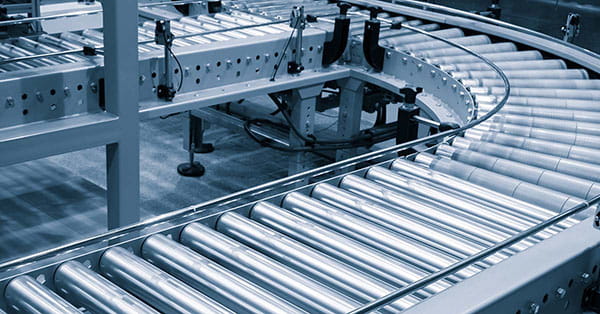Georgia Conveyor Systems Supplier
AS/RS systems and conveyors can increase the performance of your storage operations, strengthen safety and meaningfully lower labor costs.
Today’s conveyor systems can transport both individual cartons and entire pallets throughout your warehouse, and they are an integral component of modern material handling design.
Conveyors are classified in three distinct classes for the vast majority of material handling configurations:
- Powered roller or belt conveyor systems (for package handling)
- Powered chain or roller systems (for pallet handling)
- Non-powered conveyors
Powered Package Handling Roller or Belt Conveyors
Powered belt or roller systems are frequently used for smaller pieces like cartons and packages.
Belts are mostly employed for advancing products along a line, while roller conveyors are employed for accumulating products in specific areas along the line.
Belt Conveyors
In use since the early 1900s, belt conveyors are a staple of many material handling configurations. Not as costly as roller options and often better suited to specific functions like transporting lighter weight items, belt conveyors have a place in most material handling layouts.
Conveyor belts utilize a long, looped belt that sits atop a metal slider belt substructure or an array of non-powered rollers. A motor drives a pulley that turns the belt and advances products down the conveyor line.
Belt systems can be made of a range of materials and surfaces according to the purpose and nature of the conveyor. To illustrate, a belt surface might be totally flat in segments where items need to be pushed off the line and may have a gripping surface on segments where products have to be advanced up inclines.
Roller Conveyors
Although belt conveyors are time-tested workhorses, newer roller systems offer a host of more useful benefits in many modern material handling uses.
First and foremost, roller systems can allow for accumulation of objects on the line where belt systems cannot. This is an important distinction because there are countless scenarios where objects must decelerate and accumulate in material handling applications. Accumulation is often necessary when products must be paused before being forwarded to automated palletizers or sorters.
Advanced roller systems also have the capacity to track objects on the line and utilize zero pressure accumulation, meaning none of the products collecting on the line directly touch as they slow down and come to a stop.
Roller conveyors comprise several cylindrical rollers that are typically controlled in one of these ways:
- Line shaft conveyors: in a line shaft system, a long tubular rod runs underneath the rollers at a right angle to them and is joined to each cylinder with flexible O-rings. A motor rotates the shaft and thereby turns the rollers by way of the attached O-rings. Line shaft conveyors are the least costly of all roller conveyors, but they may also need the most maintenance because the linkages between the shaft and rollers tend to need adjustment and sometimes fail.
- Belt-driven roller conveyors: As you would surmise from the name, belt-driven roller systems are powered by a belt mechanism that lies underneath the roller surface. A motor propels the belt, which advances the rollers.
- MDR conveyors: Motorized roller conveyors, sometimes called motor-driven roller (MDR) conveyors, are built in segments where one cylinder from each segment is propelled by its own power source. That one powered cylinder is joined to the others in that section by way of rubber O-rings, and therefore powers all the cylinders in the section. Motorized segments are positioned in succession to create the conveyor line.
Motorized roller conveyors are known for their energy efficiency because: a.) They usually run on 24-volt direct current motors and b.) These motors are configured to engage only when an object is present on the rollers, meaning they are motionless much of the time.
Although MDR conveyors are more expensive than belt drive and line shaft systems, power expenses and service expenses are usually quite a bit lower than the other options mentioned. - Segmented belt conveyor: The design of motor-driven roller systems ultimately led to the development of segmented belt conveyors. Similar to MDR systems, segmented belts are powered individually and offer many of the same advantages of MDRs, including accumulation potential.
Powered Pallet Handling Conveyors
Powered pallet handling conveyors are quite often used with automatic palletizers and AS/RS setups. Pallet Pallet handling conveyors can typically accommodate loads of up to two tons and operate at a far slower rate than carton handling systems, often at speeds of two to four pallets per minute.
Pallet handling conveyors come in one of two types: roller conveyors and chain conveyors.
- Pallet handling chain conveyor: Perhaps the most basic of all conveyors, pallets on a chain conveyor line sit on top of segments of heavy-duty chain. A drive mechanism advances the chain segments which in turn advance the pallets along the line.
- Pallet handling roller conveyor: Somewhat like motor-driven roller systems, pallet handling roller systems use larger rollers and sturdy chains to link the motorized roller to the remaining rollers in a conveyor unit.
Non-Powered Conveyors
Skatewheel or roller conveyors are the conventional types of non-powered conveyors used in material handling. These types of systems use inertia and gravity to move smaller loads through warehouses, pick modules, automated sorters, workstations, loading docks and package-sorting areas.
Skatewheel systems are made up of numerous separate wheels and require minimal power to maintain the inertia of objects as they move down a conveyor line. In general, they propel items faster than non-powered roller configurations, and they have more versatility when it comes to layout. Because they’re standalone wheels instead of a belt, they may be applied in curved segments of a conveyor system.
In general, non-powered roller systems are less expensive than skatewheel conveyor systems. They’re frequently utilized for pick modules, workstations and other sectors where it’s useful to maintain a level platform to perform tasks. They may also be utilized to decelerate items that originate from higher speed systems like sorters so that human laborers can keep up with system output.
Both types of non-powered conveyors have a serious disadvantage compared to powered systems: By employing gravity and inertia to move materials, you lose the ability to directly manage the force applied to those materials. Put another way, you don’t have influence on the inertia and speed of products on your conveyor line.
Conveyor Companies Near Me
If you’d like a complete evaluation of conveyor system options for your storage facility, distribution center or other material handling operation, contact a professional at Carolina Handling.
-
-
Proudly serving
Augusta, Thomson, Waynesboro,
Sandersville, Milledgeville,
Macon, Warner Robins,
Dublin, Swainsboro,
and the entire State of Georgia.
You May Also Like:
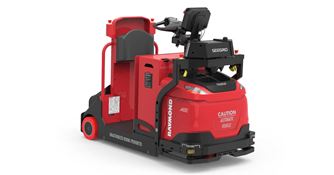
Autonomous Guided Vehicle (AGV) - Augusta
Carolina Handling sells and services Autonomous Guided Vehicles (AGVs) in Augusta and throughout the State of Georgia.
Learn More
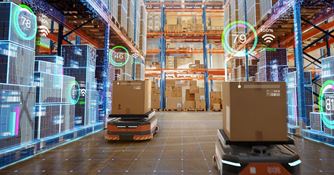
Autonomous Mobile Robot (AMR) - Augusta
Carolina Handling sells and services Autonomous Mobile Robots (AMRs) in Augusta and throughout the State of Georgia.
Learn More
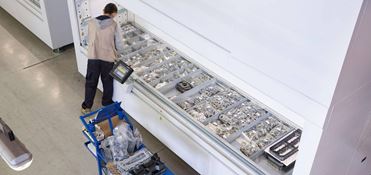
Vertical Lift Module - Augusta
Carolina Handling sells and services Vertical Lift Module (VLM) systems in Augusta and throughout the State of Georgia.
Learn More

Forklift Repair - Augusta
Carolina Handling sells and services forklifts in Augusta and throughout the State of Georgia.
Learn More
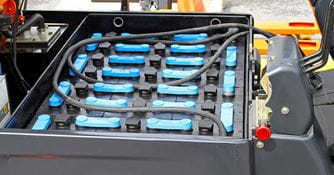
Forklift Battery - Augusta
Carolina Handling sells and services forklift batteries in Augusta and throughout the State of Georgia.
Learn More


